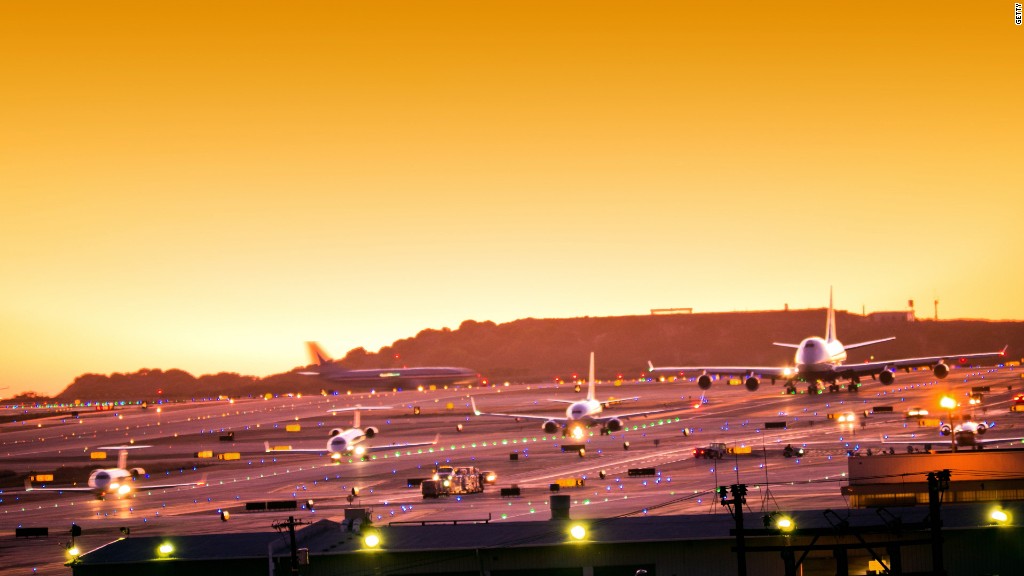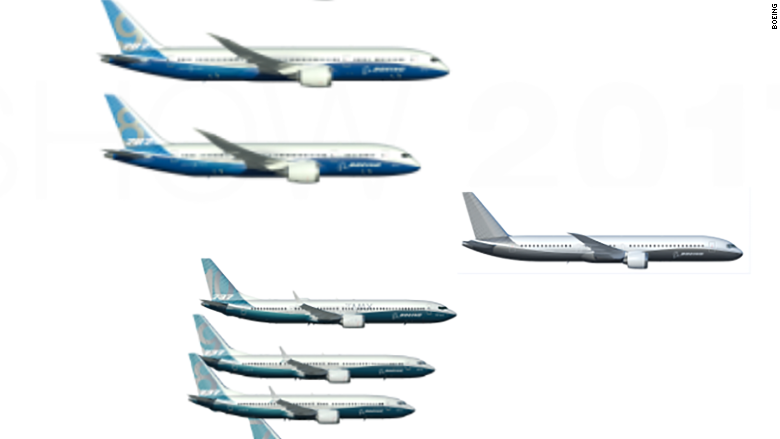
Airbus has debuted its much-anticipated A321LR, the world's longest-range jet with a single aisle currently in production.
The plane took its maiden flight Wednesday from the European plane maker's factory in Hamburg, Germany.
'LR' stands for longer range. The plane can fly for 4,000 nautical miles, or about eight hours of flying, before it needs to refuel.
It is designed for transatlantic routes, as airlines want to fly non-stop to and from smaller cities that don't have the demand for a big twin-aisle aircraft.
Airlines like JetBlue Airways said it is studying whether to buy the A321LR as part of a strategy to potentially expand its service to Europe. Airbus said Wednesday it has amassed more than 1,900 orders for the A321neo and its longer-range model from more than 50 customers.
First delivery of the jets begin later in 2018 following about 100 hours of airborne tests over the coming months. The first operator has not yet been disclosed, but airlines like low-cost carrier Norwegian Air Shuttle, Air Transat in Canada and Ireland's Aer Lingus have committed to the plane.
Airbus has made small modifications to its A320neo to create A321LR. It has as many as three additional fuel tanks and can carry about 7,700 pounds of additional gas or passengers and their bags.
The arrival of the A321LR is part of an escalating fight between Airbus and its American rival Boeing (BA) over what the plane makers have dubbed "the middle of the market."
With the A321LR, Airbus says it "has captured a solid 80%" of market for flights that don't need a long-range jet, but are too busy for a small single-aisle aircraft.
Boeing, meantime, is still pondering plans for its first new jetliner since 2011. The jet is dryly called the "New Mid-Market Airplane," but it has been dubbed the Boeing "797" by prospective customers.
The "797" is a small twin-aisle airplane that could seat between 225 and 270 passengers for flights of up to 5,200 nautical miles, or just over 10 hours.
The jet will be tailored to serve congested airports on routes such as New York to Los Angeles. Like the A321LR, the Boeing plane should also be efficient enough to serve medium-range flights connecting the United States to smaller European cities.
The jet would fill a gap between Boeing's single-aisle 737 workhorse and its advanced long range 787.

Boeing hasn't given the green light to build the 797 and would have to spend $10 billion to $15 billion to bring it so market, a vast sum more than Airbus is spending to create the lightly upgraded A321LR.
So Boeing will need to charge a premium price to earn back its investment as it battles the A321.
Boeing believes there could be a market for more than 4,000 such aircraft over 20 years starting around 2025 when the plane would first fly passengers. However, some industry analysts believe that figure is closer to 2,500 aircraft.
Boeing chief executive Dennis Muilenburg said the company is talking to more than 50 customers about the plane.
Meanwhile, Boeing started taking orders in June for its stretched 737 Max 10, which arrives in 2020. That's aimed at blunting the runaway success of the A321neo and sibling A321LR while Boeing figures out what it wants to do with a new jet.
"We're not going to launch this airplane unless the business case makes good sense," Muilenburg said of the prospective 797 on Wednesday. "We still have time to do our homework and make the right decision, so we're not going to be rushed into a decision here."

